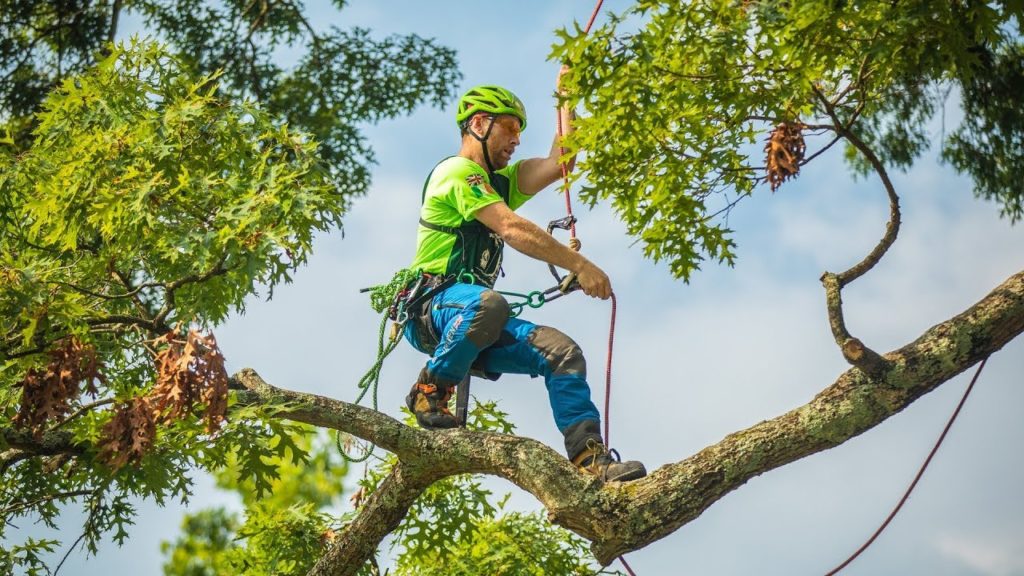Banana trees, with their rich green leaves and tropical charm, are a typical sight in nurseries and scenes. However, there may come a time when you need to get rid of them. Knowing the right way to remove banana trees is essential, whether it’s because of disease, too many trees, or just a change in how your garden is laid out.
Preparing for the Removal
Before you actually begin the removal of a banana tree, it is essential to make thorough preparations. Sufficient readiness guarantees that the evacuation goes without a hitch, securely, and effectively. Beneath, we’ll frame the means you ought to take to prepare for banana tree evacuation.
Assemble Important Apparatuses and Gear
To effectively eliminate a banana tree, you’ll require a bunch of explicit devices and hardware. Having these things available before you start will make the interaction considerably more reasonable. Here is a rundown of fundamental devices:
Pruning Shears: Excellent pruning shears or loppers will be utilized for managing and slicing through the banana plant’s leaves and pseudostem.
Spade or Shovel: Digging around the tree’s base and losing the soil will require a sturdy shovel or spade.
Gloves: Solid cultivating gloves will shield your hands from cuts, scratches, and possible contact with allergenic banana plant sap.
Goggles for Safety: Security goggles or glasses give eye insurance from flying flotsam and jetsam during cutting and digging.
Security Stuff: You might want to protect your head by wearing additional safety gear, such as a hard hat or helmet, depending on the size and age of the banana tree.
Footwear: Wear suitable footwear with a great foothold to forestall slips and wounds while working.
Tarp or wheelbarrow: These things are valuable for moving cut plant material, roots, and soil away from the evacuation site.
Pruning Saw or Trimming tool (Discretionary): For bigger, more settled banana trees, a pruning saw or trimming tool might be important to slice through the pseudostem.
Safety Measures
Banana tree removal can necessitate heavy lifting and the use of sharp tools, so ensuring one’s safety should be the top priority. Take into account the following safety measures:
Clothing for Protection: Wear long sleeves, long jeans, and shut toe shoes to protect your skin from scratches and cuts.
Safety gear: As referenced before, solid cultivating gloves are fundamental for hand insurance.
Security Glasses or Goggles: Goggles or safety glasses can protect your eyes from falling plant material and debris.
Keep hydrated: Contingent upon the environment, banana tree evacuation can actually be requested. To keep hydrated, sip a lot of water.
Collaborate with Others: If conceivable, have somebody help you during the expulsion interaction. They can offer assistance, give you tools, or call for assistance in an emergency.
Really take a look at Nearby Guidelines and Grants
Before you start eliminating a banana tree, it’s critical to really look at nearby guidelines and get any essential grants. If the banana tree is in a protected or conservation area, there may be restrictions on tree removal or landscaping practices in some areas. Make contact with the environmental or municipal authorities in your area to ensure compliance with all applicable laws.
By socializing the right apparatuses, playing it safe, and guaranteeing legitimate consistency, you’ll be completely ready to handle the genuine expulsion of your banana tree in the accompanying advances.
Step-by-Step Procedure to Remove Banana Trees
Tree Now that you have gathered the necessary tools, taken safety precautions, and ensured compliance with the law, it is time to begin the step-by-step procedure for removing a banana tree from your garden or landscape. Keep these rules for a fruitful expulsion:
Step 1: Evaluate the Tree
Before you start the evacuation cycle, investigate the banana tree. Think about the accompanying:
Tree Wellbeing: Examine the overall health of the tree. Assuming it’s seriously infected, evacuation might be important to forestall the spread of illness to different plants.
Size of Tree: Find out how big the banana tree is. More modest trees might require less work to eliminate, while bigger, more settled ones might test more.
Course of Evacuation: Choose in which course you believe the tree should fall or where you need to direct its evacuation. This will assist you with arranging your cuts and digging in a similar manner.
Step 2: Accumulate Your Devices
Guarantee that every one of the apparatuses and hardware you want are inside simple reach. Make sure that they are in great working condition before you start. This step is urgent for effectiveness and wellbeing during expulsion.
Step 3: Trimming and Pruning Leaves
Utilizing pruning shears or loppers, begin by managing the banana tree’s leaves. Start at the base and move gradually up. Eliminate however many leaves as important to uncover the pseudostem and make it simpler to work with.
Eliminate the Pseudostem: Pruning shears can be used to cut through the pseudostem on smaller banana trees. Make use of a chainsaw or pruning saw for larger trees. Get it done as near the ground as could really be expected, yet be wary not to harm the devices.
Step 4: Digging Around the Base
Make a Channel: Dig a trench about 1-2 feet away from the pseudostem around the base of the banana tree with a shovel or spade. To create a slope, dig down and angle the trench inward.
Find the Causes: Keep digging until you begin to uncover the primary foundations of the tree. During this process, be careful not to harm the pseudostem or the roots.
Step 5: Cutting the Roots to Remove the Root Ball
Cut carefully through the exposed roots with a pruning shear, pruning saw, or chainsaw. Begin with more modest roots and work your direction to bigger ones. The root ball will be let go by this.
Lift and Eliminate: If you have a partner, ask them to assist you in lifting and removing the banana tree after you have removed most of the roots. Handle the pseudostem and cautiously lift the tree into a more healthy place.
Review for Outstanding Roots: After expulsion, assess the opening for any leftover roots. Snags can be cut and removed with your tools.
Step 6: Get Rid of Plant Material
Place the cut leaves and plant material in a handcart or on a covering for removal. Contingent upon nearby guidelines, you might compost them or take them to a green waste office.
Fill the Opening: Fill the opening left by the evacuation of the banana tree with soil. To get rid of any air pockets, tightly tamp it down.
Step 7: Handle Stumps (if Any)
If a stump remains after removal, you have a few choices:
Grinding Stump: The remaining stump should be removed by hiring a professional stump grinder.
Stump Rot: Over time, let the stump naturally rot. Drilling holes in the stump and applying a decay accelerator can speed up this process.
Step 8: Aftercare
Make certain that the place where the banana tree used to be is well-kept. Water and care for adjacent plants, and screen for any indications of infection or regrowth from extra roots.
With these bit by bit guidelines, you can securely and really eliminate a banana tree from your nursery or scene. Take your time and proceed with caution at each stage of the removal because safety is of the utmost importance throughout the process.
Dealing with Stumps
When you remove a banana tree, you might leave behind a stump in the ground. Managing the stump is a significant stage to guarantee the region is clear, safe, and prepared for new plantings or finishing. Here are different choices for tending to the excess stump:
Stump Evacuation
Proficient Stump Processor: In the event that you have an enormous or obstinate stump, recruiting an expert stump processor is many times the most productive technique. Powerful machines known as stump grinders can quickly grind the stump to ground level, enabling you to replant or repurpose the area.
Stump Grinding at Home: You can attempt to remove the stump on your own if you have access to a stump grinder and previous experience using power tools. Wear the appropriate safety gear, including safety glasses and ear protection, and carefully follow the manufacturer’s instructions.
Stump Rot
In the event that you favor a more regular way to deal with managing the stump, you can allow it to rot after some time. This is how it’s done:
Drill Openings: Utilize a power drill to make a few equally divided openings in the stump, especially in the top surface and at the edges.
Rot Gas pedal: Use either a store-bought stump decay accelerator or a homemade solution, such as Epsom salt and water, to fill the holes. These gas pedals urge the stump to separate quicker.
Wait and Cover: To keep the heat and moisture in, cover the stump with a plastic sheet or tarp. This will assist the rot interaction. Depending on the size, cover the stump for several months to a year.
Screen Progress: Check the stump’s condition on a regular basis. As it rots, it will become milder and simpler to fall to pieces. Then you can manually remove the decayed wood.
Stump Expulsion Options
On the off chance that stump evacuation or rot isn’t possible, you can think about different choices:
Plant Around It: Plant ground cover, flowers, or shrubs around the stump to disguise it if it is small and does not interfere with your landscaping plans.
Embellishing Use: Get imaginative with the stump. By putting a potted plant on top, using it as a base for outdoor decor, or carving it into a sculpture, you can make it a natural focal point.
Outside Furniture Base: Convert the stump into a base for open air furniture, like a natural seat or table.
Safety Considerations
- Regardless of the method you use to remove the stump, safety should always come first:
- Wear proper wellbeing gear while utilizing power instruments or dealing with rot gas pedals.
- Get youngsters and pets far from the stump evacuation or rot process.
- Observe all wellbeing rules and maker’s directions for gear and synthetic substances.
By tending to the stump appropriately, you can finish the banana tree expulsion process and set up the area for future finishing or planting projects, guaranteeing a safe and outwardly satisfying climate in your nursery or scene.
Tips for Safety
When removing banana trees or working on any landscaping project, safety should always come first. Keeping security rules and playing it safe can forestall mishaps and guarantee a fruitful expulsion process. Important safety considerations include:
Proper Safety Gear for Personal Use
Continuously wear wellbeing gear, including security glasses or goggles, solid gloves, long-sleeved dress, long jeans, and shut toe shoes with great footing. In the event that you’re utilizing power devices, think about wearing ear security and a hard cap.
Keep hydrated: Dehydration can result from working outside, especially in hot weather. To stay hydrated during the removal process, drink plenty of water.
Collaborate with Others: Whenever the situation allows, have somebody help you during the evacuation cycle. They can offer assistance, give you tools, or call for assistance in an emergency.
Tool Safety Check out your tools
Verify that all tools and equipment are in good working order before beginning. Tools that are broken or don’t work right can be dangerous.
Follow the Tool’s Directions: Use devices as indicated by the maker’s directions. This incorporates appropriate dealing with, upkeep, and security safeguards.
Carefully Use Tools: When working with chainsaws, pruning shears, or other sharp tools, use caution. Keep a firm grip on them and keep them away from your body.
Secure Instruments: At the point when not being used, place devices in a completely safe area to forestall stumbling risks.
Worksite Security
Secure the Workspace: Obviously mark the workspace and forestall unapproved access. Keep youngsters, pets, and onlookers at a protected distance.
Clear Garbage Instantly: Eliminate cut plant material, garbage, and any stumbling risks from the workspace as you progress to keep a protected and coordinated work area.
Keep an Eye Out for Risks from Above: Know about above perils, like falling branches or flotsam and jetsam, particularly while cutting or eliminating portions of the banana tree.
Legitimate Cutting Procedures
Cutting Course: Make sure the pseudostem or branches fall in the intended direction, away from people, structures, and other plants, when you cut them.
Avoid going too far: Keep up with your equilibrium and abstain from overextending while utilizing devices. Moving your body or equipment is safer than excessive stretching.
Soil and Root Wellbeing
Tough Balance: Be careful while digging around the foundation of the banana tree. To avoid falling, maintain solid footing.
Watch for Underground Utilities: Prior to digging, check for underground utilities (e.g., gas, water, electric lines) to stay away from harm or mishaps. Contact your neighborhood service organizations if uncertain.
Crisis Readiness
Medical aid Pack: For minor injuries, have a well-stocked first aid kit on hand.
Contact in an emergency: Approach a telephone or specialized gadget in the event that you want to call for help or illuminate somebody regarding your whereabouts.
Know Your Cutoff points: Hire a professional if you don’t know how to use power tools or remove trees successfully to ensure safety and success.
Recollect that security is a common obligation. Impart security rules to anybody helping you with the evacuation, and focus on the prosperity of yourself and people around you in the meantime. You can successfully remove a banana tree and keep everyone safe by adhering to these safety guidelines.
FAQs
Is it important to eliminate banana trees whenever they’ve fruited?
Not really. Assuming the banana tree is solid regardless of creating a natural product that you need to collect, there’s no quick requirement for expulsion. Nonetheless, when a banana tree has fruited, it will normally kick the bucket back. Evacuation might become important on the off chance that the tree becomes sick, stuffed, or on the other hand if you need to replant the region.
Could I at any point eliminate a banana tree by just chopping it down at ground level?
While chopping down a banana tree at ground level is a typical technique, it may not totally wipe out the plant. The broad root foundation can result in regrowth. To guarantee the total evacuation of the tree, it’s fitting to follow an intensive interaction that incorporates digging and eliminating the roots.
Is it protected to eliminate a banana tree all alone, or would it be a good idea for me to employ an expert?
It relies upon your experience, the size of the tree, and your solace level with utilizing apparatuses like trimming tools. More modest banana trees can frequently be eliminated by property holders, however bigger or additional moving evacuations might need proficient support to guarantee wellbeing and adequacy.
Could I at any point reuse or reuse the wood from an eliminated banana tree?
Indeed, banana tree wood can be reused for different tasks like nursery borders, regular fencing, or in any event, creating. In any case, remember that banana tree wood is somewhat delicate and may not be appropriate for all applications. It can likewise be inclined to spoil whenever presented to dampness for expanded periods.
How would I forestall new banana trees from growing after evacuation?
Forestalling regrowth includes intensive root evacuation and checking for any new shoots. Apply a root hindrance on the off chance that you’re worried about potential regrowth. Furthermore, routinely investigate the region for any indications of new banana tree puppies and instantly eliminate them to keep them from securing themselves.
Conclusion
Though removing a banana tree may seem like a difficult task, it can be done safely and effectively with the right information and preparation. You can transform your garden or landscape while maintaining a beautiful and thriving outdoor space by following the step-by-step instructions and avoiding common pitfalls.





